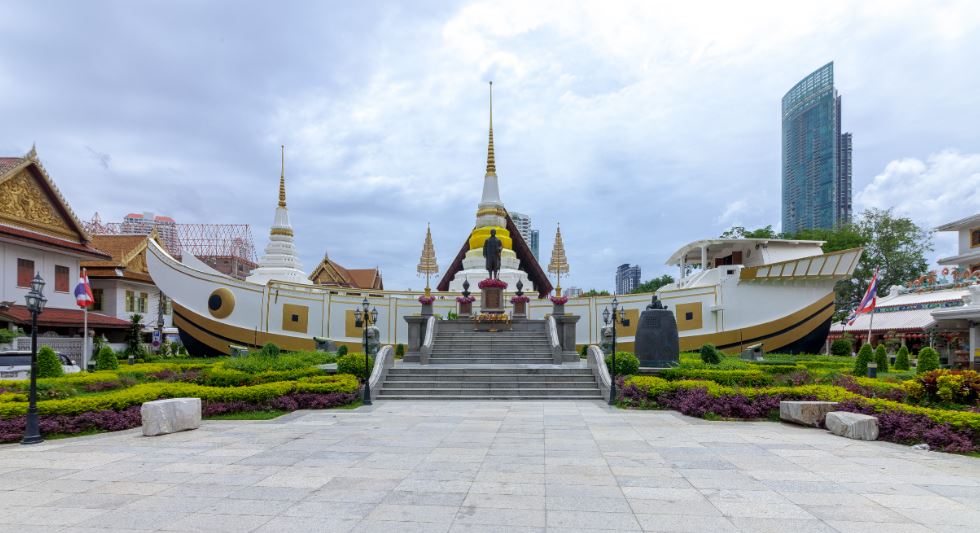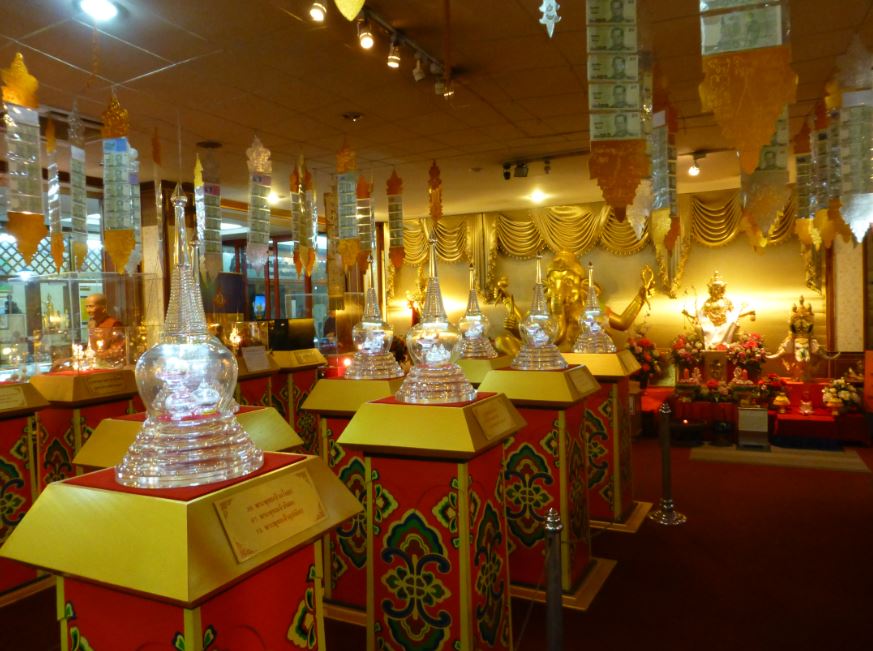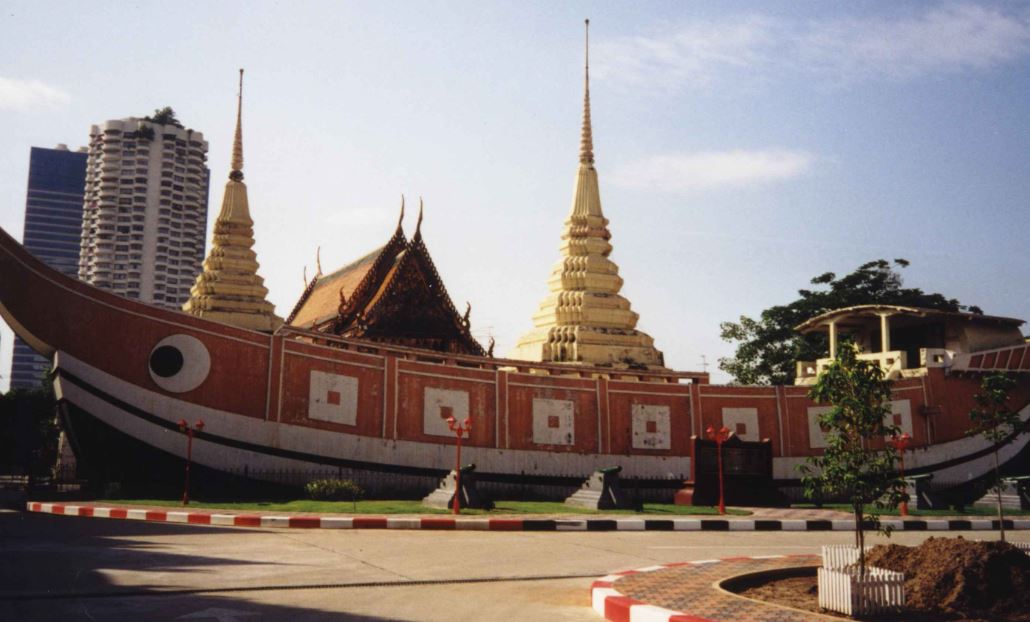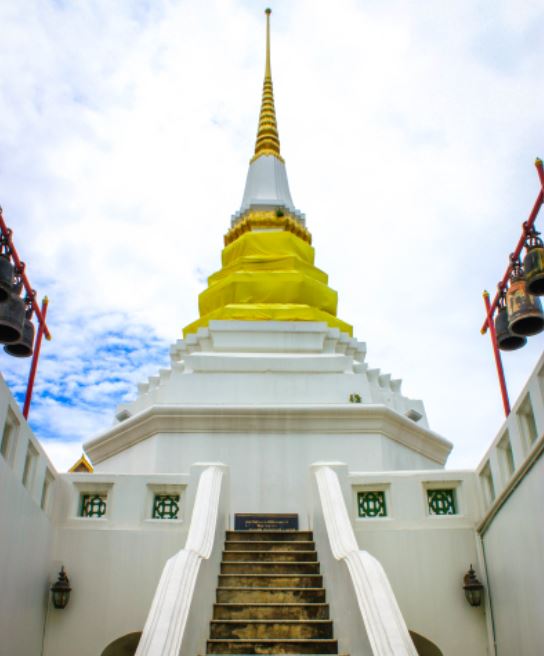Aside from the Bangkok snake farm, other tourist attractions in the city are worth visiting. If you go to Bangkok and visit the Wat Yannawa temple located at 40 Charoen Krung Rd, Yan Nawa, Sathon, Bangkok 10120, Thailand, you might be curious about its structure and would leave your eyebrows raising.
You might wonder why the structure of this temple is like that of a Chinese junk boat. Its structure is not a Thai symbol, nor is it a historical or holy symbol. However, if you learn the story behind this temple, you’ll know it is among the greatest tribute to Thai culture.
The Wat Yannawa temple was only an ordinary temple before. However, it continued expanding through time, especially during the flourishing of the trade between China and Siam. Chinese junk boats were a popular thing among the people. However, they were slowly being replaced by modern boats during these times.
The temple has already gone through a lot of renovations. Since buildings deteriorate through time, it is almost impossible for the Wat Yannawa temple to preserve its original form. Thai officials and its people have no choice but to fix and renovate the temple as it holds a lot of Buddha relics and other important holy figures for the Buddhist people.
However, before the Wat Yannawa temple achieved its current form, this temple had a rich history that you might enjoy learning about. This blog will feed your curious minds and will share with you some knowledge about the history of Wat Yannawa, The Boat Temple.
Ayutthaya period
The Ayutthayan period started in the year 1351 and ended in 1767. During this period, the Wat Yannawa Boat Temple was established. King Rama I first built this temple as a buffalo stable and then named it Wat Khok Kwai. The temple was built even before the Rattanakosin Kingdom and the city of Bangkok, Thailand, was founded.
During his reign from 1792 to 1809, he designated the Wat Khok Kwai temple as a royal temple and renamed it Wat Khok Krabue. The temple, originally a buffalo stable, became an ubosot or an ordination hall. However, it remained to be a stable for buffaloes and other different species.
The Wat Khok Kwai temple remained in its form not until the reign of King Rama III from 1824 to 1851. During his reigning period, China and Siam’s trade began flourishing. However, on the other hand, Chinese junk boats were starting to be outdated, and most of them were no longer in use.
Modern ships became the substitute for Chinese junk boats. These junk boats played a huge part in the country’s prosperity. So King Rama III thought of making a tribute to the obsolete Chinese junk boats to remember them even until the end of time. This is why he started the construction of a shrine shaped like a Chinese junk boat on the temple, and it became the most distinct feature of the temple.
From Wat Khok Kai and Wat Khok Krabue, the temple was slowly called Wat Yannawa and was given the nickname “The Boat Temple.” In Thai, “Yan” means craft, and “Nawa” means boat or vessel. So this is why Wat Yannawa is often called the boat temple.
Wat Yannawa, The Boat Temple, is a third-class royal temple in Bangkok, Thailand. Inside this temple is an ordination hall where people usually meditate and offer prayers to Buddha. It consists of different Buddha relics and images. On the outside of the temple, you can see another Buddha relic from Sri Lanka placed outside the building and an image of the Goddess of Mercy just in front.
THE PHYSICAL STRUCTURE OF WAT YANNAWA
The first few things you will notice when you visit Wat Yannawa are its unusual boat-like shape and color. The white and golden large boat at the center will surely capture everyone’s attention since it’s unlike any other Bangkok temple. The temple’s gold and sparkling rooftop spires are also great sights.
Aside from these, the following are other structures in the Wat Yannawa temple that you should note.
The Viharn
A viharn is a Buddhist temple that serves as a dwelling place for monks and nuns. It is also considered Buddha’s shrine and can be used as a meditation area. So the viharn of Wat Yannawa, which is about 40 meters in length and is made of concrete, was built into the structure of a Chinese junk boat.
Inside this, you will see images of Buddha and other relics believed to be belonging to Buddha. According to the locals, these relics contain magical powers, so most people pray to them.
Like what was said earlier, building the viharn into the shape of a Chinese junk boat serves as a tribute to the boats that helped with the prosperity of the trade industry in Thailand.
Visitors can enter and have access to the viharn.
The Two White Chedis
Chedis is a Thai term for Buddhist stupa. Buddhist stupas are commemorative monuments that usually consist of holy relics of Buddha or other saints.
Wat Yannawa, The Boat Temple consists of two standing white chedis. They are placed on the area of the boat where the masts of the boat usually stand. Other Thais call the Wat Yannawa “sampao chedi,” Chinese junk boats with chedis.
Since it is a boat, it must have a wheelhouse. In Wat Yannawa temple, the wheelhouse is a tiny room or the altar to the rear consisting of different Buddha images. Visitors can also pay their respects in this room.
When you pass by the top stairs going to the boat, you will see the statue of King Nangklao or King Rama III.
Other things at the Wat Yannawa temple
- Upon entering the Wat Yannawa temple, you will see an expansive and well-decorated gatehouse that serves as an entrance to the temple grounds.
- The ubosot or the ordination hall of monks is located behind the large viharn. It has multi-tiered roofing, styled with chofahs, a Thai architectural roof decorative ornament. On the edges of the ubosot’s roof, you will see a lot of decorative Naga serpents.
- The temple also has meeting halls, offices, a museum, a library, and a book shop.
Despite its unique structure, this temple is not talked about a lot. Only a few tourists visit Wat Yannawa even though it is near the Taksin Bridge sky train station. Most visitors to the temple are usually locals. But despite all that, ever since its construction, the temple had increased its personality and offered an essential lesson with a great history.




